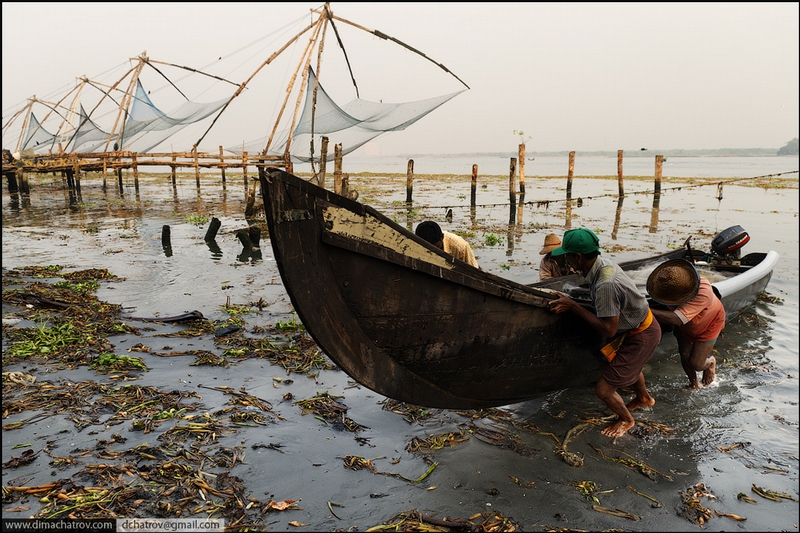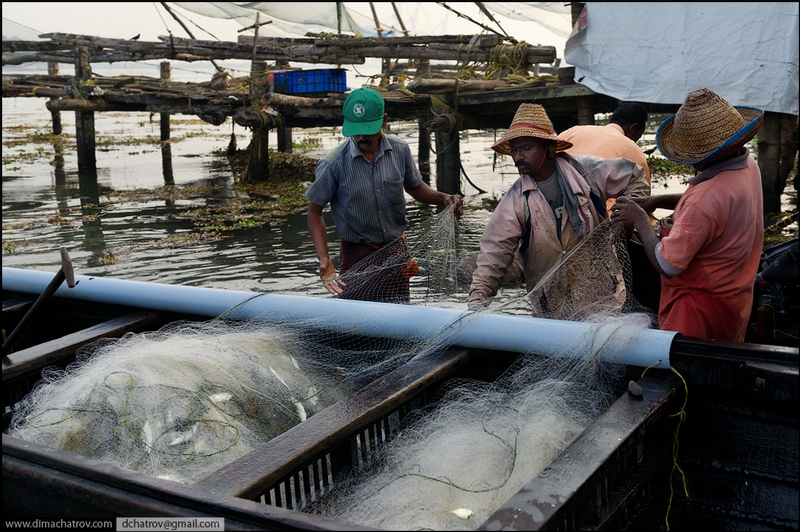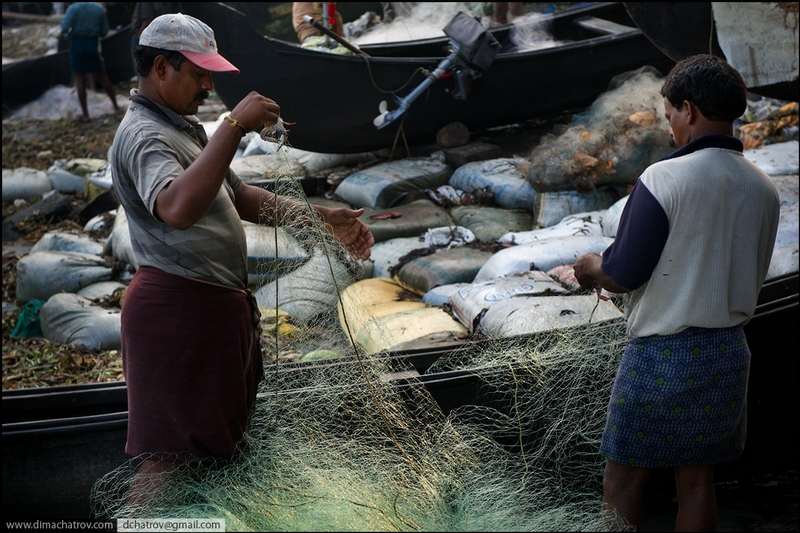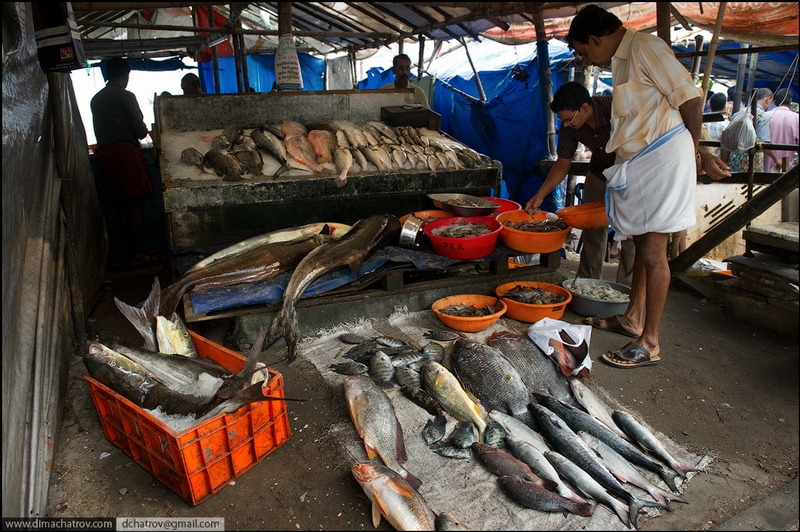
Kerala is a state of India located in the South of the country. A warm
ocean, mountain air and tea plantations - this part of the country
greatly differs from the North one. And one of its visiting cards is
Chinese fishing nets. They started their history in the 14th century
since the moment when the Chinese penetrated the continent.
There are many of such nets in Kerala but all of them are gradually
decaying as the bad ecology and increasing number of people drive fish
from the shores.

A Chinese fishing net is a complex construction mostly resembling a
gigantic shadoof. The net is stationary and operated by a brigade of 5
people. With the help of the stone counterbalances, a huge cloth is
lowered into the water and some time later lifted already full of the
catch.

This 59-year-old man's name is John. And he's been a fisherman for 30
years already. John complains that the catch has lately become very poor
- only small fish and various crap from the shore are caught in the
net.

All the mechanism is hung by a thread. Shaky planks, corded laths and
some pasteboards are under the feet and all the construction stands on
tainted stilts. It seems unbelievable how it managed to survive so many
years.

Fishermen work without days off. 365 days a year except for one holiday - Christmas.

Moreover, they don't possess the net. They are just wage earners
working for a part of the catch. 70% goes to the owner and 30% is
divided between the fishermen.

The other income they get is from the curious tourists who are glad to
give them $2-3 for the opportunity to take some photos or to try pulling
some heavy cords by themselves.

Fish is sold right here, 2 meters far from the fishery point.


And these are the fisherman of the Arabian Sea, gloomy and unfriendly,
the real ones. They don't use Chinese fishing nets (which are, honestly,
more for the tourists' entertaining) but put to sea on boats as 100 and
200 years ago. The only difference is that now each boat has a powerful
engine.

They go fishing at dawn and usually come back at 9 a.m. It's these guys
who feed all the local restaurants and a crowd of dealers.

Their nets are thin and silicate, made in China. And according to the local fishermen, their quality leaves much to be desired.


Fresh fish is put on the ice and sold very soon.
via dima-chatrov
0 comments:
Post a Comment